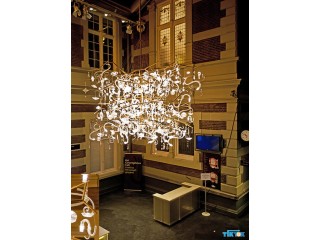What is a Ball Valve and How Does It Work? Private
2 years ago - Multimedia - San Antonio - 51 views -A ball valve is a shut-off valve that allows, obstructs, and controls the flow of liquids, gases, and vapors in a piping system by rotating the ball having a bore inside the valve. The ball is mounted against two seats and has a shaft that connects it to the operating and control mechanism that rotates the ball. When the cross-section of the bore is perpendicular to the area of the flow, the fluid is not permitted to pass through the valve. The fluid flows through from the valve, and the fluid flow rate depends on the area of the bore exposed to the floor.
Ball valves are a type of quarter-turn valve along with plug valves and butterfly valves. They can be operated manually or by using an actuator. The simplest operation of a floating ball valve is through the use of a wrench or a lever manually turned by an operator. Torque is applied to rotate the lever arm by 90° by either clockwise or counterclockwise to open or close the valve. If the lever arm is parallel to the pipe, it indicates that the valve is open. If the lever arm is perpendicular to the pipe, it indicates that the valve is closed.
Ball valves come in many designs and features to satisfy various industrial needs. The standards and specifications for ball valves vary depending on the industry where it is utilized.
The ball is a sphere that has a hole in its center. The hole in its center is called the bore. The bore serves as the flow opening of the fluid when the cross-section of the fluid flow path and the bore is coplanar. Otherwise, the flow is throttled. A ball valve may have a solid ball or a hollow ball. A solid ball has a constant opening diameter throughout its structure, which helps the fluid to smoothly flow at a constant velocity. A hollow ball, on the other hand, has a hollow internal structure, and the space inside it allows more fluid to pass through the valve. However, the larger space creates turbulence and high velocities. A hollow ball is more lightweight and cheap compared to a solid ball.
Shaft
The shaft connects the ball to the control mechanism that rotates the ball. The shaft has seals such as O-rings and packing rings to seal the shaft and the bonnet to avoid leakage of the fluid. The shaft may be manually operated by a lever or a handwheel or operated by an electric, pneumatic, or hydraulic actuation.
Bonnet
The bonnet is an extension of the valve housing that contains and protects the shaft and its packing. It may be welded or bolted to the body. It is also made of hard metal and it covers the opening made from connecting the shaft to the external control mechanism.
Seat
The valve seats provide sealing between the ball and its body. The upstream seat is adjacent to the inlet side of the valve. The downstream seat is found on the opposite side of the upstream seat which is adjacent to the discharge side of the valve.



















